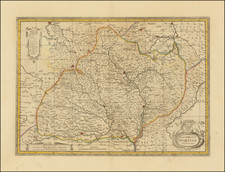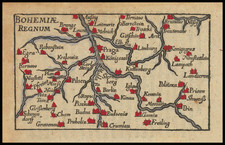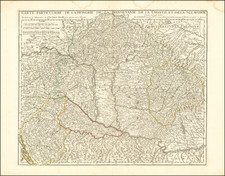Lizars map offers a detailed look at the geography of Central Europe during a period of significant transition. By examining towns, roads, rivers, and mountain ranges, one can glean insights into the political, social, and economic dynamics of the region during the first half of the 19th century.
The towns marked on the map, aside from being economic and administrative centers, were also hubs of cultural and linguistic diversity, each with its unique history and significance. Roads connected these towns, serving as conduits for trade, movement, and communication. Meanwhile, rivers, notably the Danube, played crucial roles in commerce, transportation, and delineation of territories. The mountain ranges, such as the Carpathians, shaped migration, influenced trade, and often dictated military strategies.
During this period, Hungary and Transylvania were under the Habsburg Empire, an expansive realm comprising various linguistic and ethnic groups. The beginning of the 19th century saw Europe grappling with the impact of the Napoleonic Wars, which had repercussions for the Austrian Empire. Following the Congress of Vienna in 1815, which sought to bring stability to a post-Napoleonic Europe, the empire maintained its territories, but beneath the surface, nationalist aspirations grew.
In Hungary, figures like Lajos Kossuth championed the cause of autonomy and self-governance. This was a time of the Hungarian National Revival, which emphasized Hungarian cultural identity. Simultaneously, in Transylvania, home to a diverse population of Hungarians, Romanians, and other ethnic groups, the Romanian majority began to emphasize their cultural and political identity, particularly in the face of efforts to assimilate them into Hungarian culture.
These undercurrents culminated in the revolutions of 1848, a Europe-wide phenomenon that did not spare Hungary and Transylvania. Hungary saw an uprising against Habsburg dominance, even briefly declaring independence. However, this was short-lived, as the revolution was suppressed by the combined forces of Austria and Russia.
The Lizars were a Scottish family of engravers and printers who produced many views and maps. Daniel Lizars Sr. (1754-1812) was the son of a shoemaker, but he apprenticed with Andrew Bell, a printer and engraver. Lizars set up his own printworks near St. Giles Cathedral and took on his own apprentices, including George Bartholomew, whose son John would go on to found the important mapmaking firm later know as John Bartholomew & Son Ltd.
Daniel Sr. had three sons: Daniel Jr., John, and William Home. He also had a daughter, Jane Home. Daniel Jr. (1793-1875), the youngest of the boys, apprenticed in his father’s shop alongside George Bartholomew. When his father died in 1812, Daniel Jr. took over much of the business, expanding it and specializing in maps. The company went bankrupt in 1832, however, and Daniel emigrated to Canada.
John Lizars (1792-1860), the middle son, studied medicine and became Professor of Surgery at the Royal College of Surgeons of Edinburgh, as well as senior surgeon at the Royal Infirmary of Edinburgh.
William Home Lizars (1788-1859), the eldest, also apprenticed in his father’s shop. After learning engraving, William entered the Trustees’ Academy to learn under John Graham. He was a skilled painter and artist. When his father died, and after his Daniel Jr. left, he carried on printing and invented a method of etching that looks like wood engraving.









![(Czech Settlement in Manitoba) Mapa státu: Manitoba a kanádského Severozápadu s rozlíčnym železničním spojením a českymi a německymi osady | Manitobe Nove Cechy Hohenlohe-Langeburg [State Map: Manitoba and the Canadian Northwest with railway connections, including Czech and German settlements | Manitoba, New Cezchia]](https://storage.googleapis.com/raremaps/img/small/88274.jpg)

![[Praga urbs amplissima regni Bohemiae metropolis sedes augusti Romanorum imperatoris.]](https://storage.googleapis.com/raremaps/img/small/80625.jpg)
![Pomeraniae, Wandalicae Regionis Typ [with] Livoniae Nova Descriptio [with] Ducatus Oswieczensis, et Zatoriensis, Descriptio](https://storage.googleapis.com/raremaps/img/small/61683.jpg)

